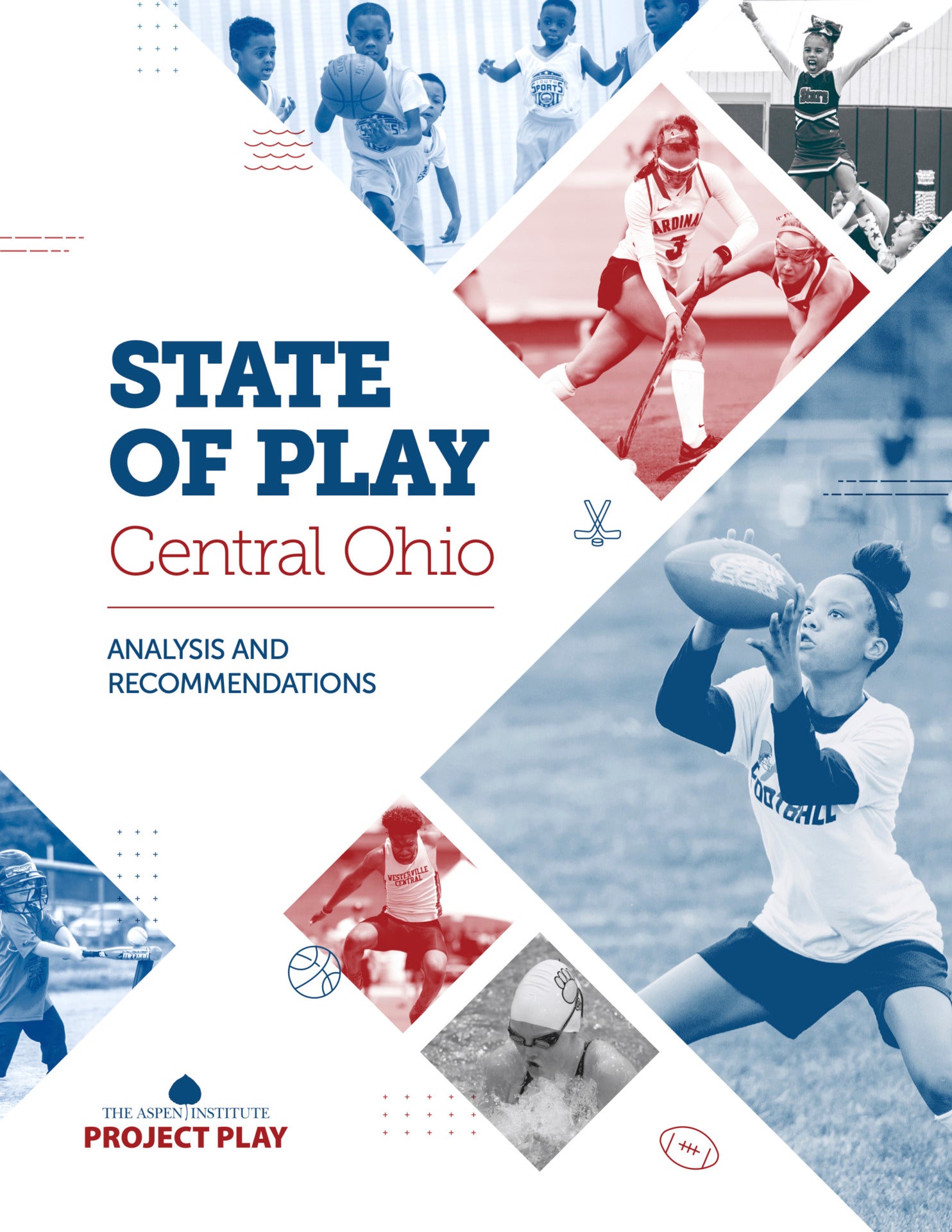The Aspen Institute Sports & Society Program analyzed the landscape of youth sports in the Central Ohio region from November 2019 to December 2020. State of Play Central Ohio offers a snapshot of how well adults are serving youth through sports, physical activity and outdoor recreation, regardless of race, gender, income or ability.
Findings for this report were guided by an advisory group of local leaders and obtained through multiple methods: individual interviews with a broad collection of stakeholders and community members; focus-group discussions with youth, coaches, and parents and caregivers; surveys conducted of youth; media accounts; and existing reports, policy analyses and publicly available data collected by the Aspen Institute and Columbus resident Michael Quesnell, the report’s principal investigator.
State of Play Central Ohio is the Aspen Institute’s 10th overall community report. The Aspen Institute has produced county reports on Seattle/King County, Washington and Mobile County, Alabama; a state report on Hawai’i; regional reports on Southeast Michigan, Western New York, Greater Rochester and the Finger Lakes, and Central Ohio; and local reports on Harlem, Baltimore and Camden, New Jersey (coming soon). Stakeholders in those communities have taken actions based on the recommendations and are seeing results.


